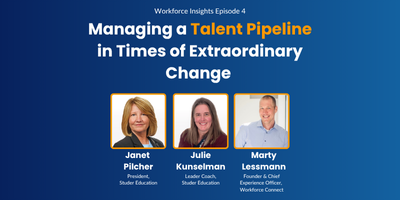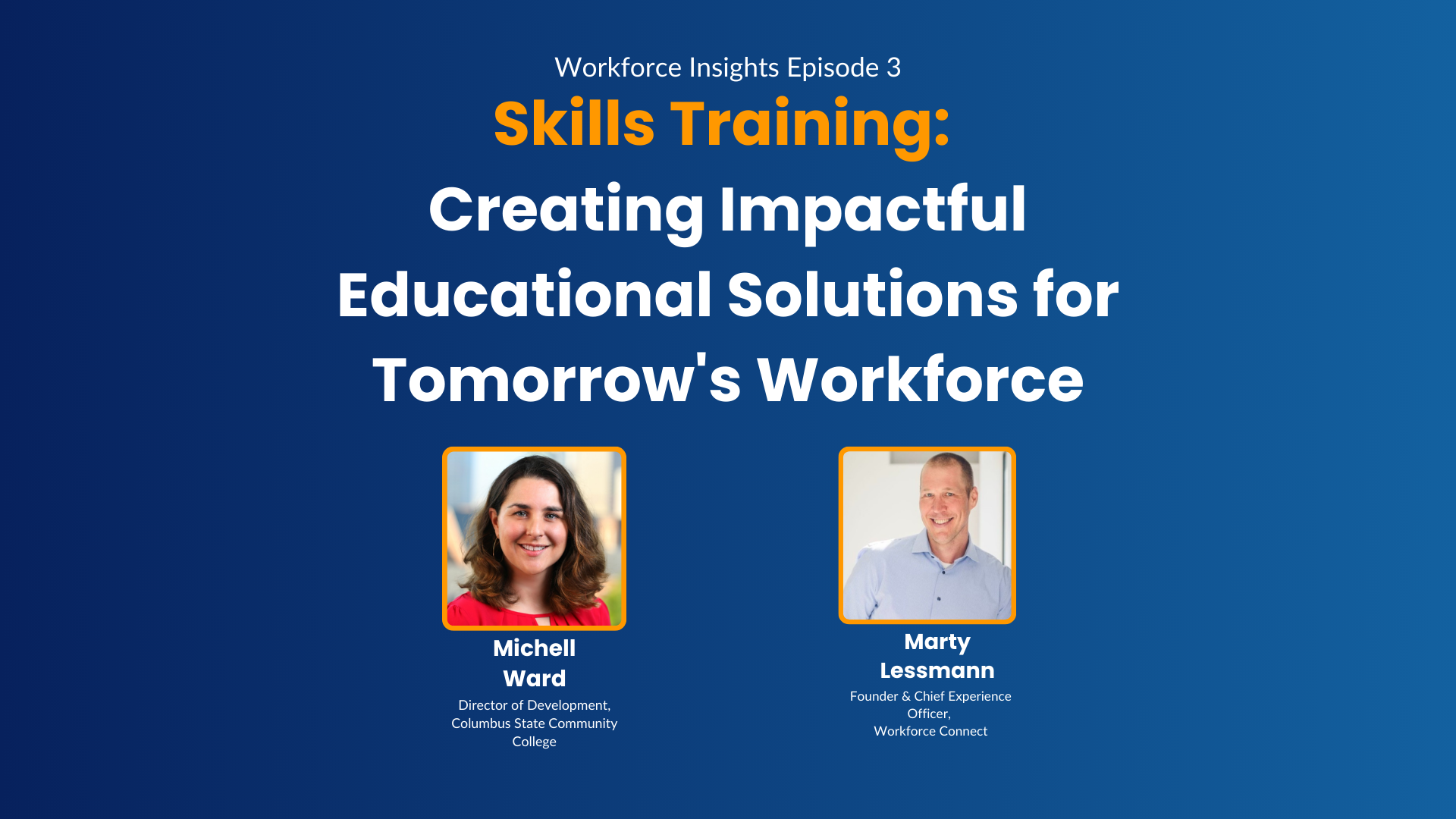Executive Summary
Creating a skilled, adaptable workforce is a multifaceted endeavor requiring the collaborative efforts of numerous stakeholders. Community colleges, workforce development boards, chambers of commerce, industry associations, and local businesses play critical roles within a workforce ecosystem designed to address current and future economic demands. This workforce ecosystem ensures job seekers have the skills employers require while simultaneously fostering economic growth in local communities. According to the National Skills Coalition (2023), regions that actively engage their workforce partners see a 25% higher job placement rate for program graduates. This insight outlines the key players within this ecosystem, describes how they collaborate to enhance workforce development, and highlights best practices for maximizing their collective impact. Understanding these dynamics is essential for organizations aiming to design and execute effective, responsive workforce programs.
Introduction to the Workforce Ecosystem
The workforce ecosystem is a diverse network of institutions and organizations collaborating to support job seekers, students, and employers. It includes educational institutions, workforce development boards, chambers of commerce, industry associations, economic development agencies, and local government bodies, each bringing distinct expertise and resources to the table. Effective partnerships among these entities are critical to align workforce training with the changing needs of local industries and to support sustainable economic growth. A recent report by the American Association of Community Colleges (AACC, 2023) indicates that 70% of community colleges rely on partnerships with other ecosystem members to successfully develop and implement their workforce programs.
This Workforce Insight reviews:
- Key Players in the Workforce Ecosystem
- Collaboration and Partnerships
- Best Practices for Maximizing Collaboration
- Case Studies of Successful Workforce Ecosystems
- Challenges and Opportunities in Workforce Ecosystem Development
“Streamlining, standardizing, and ensuring consistency in partnership management is key to unlocking new enrollment opportunities. Workforce Connect enables us to identify these opportunities and maximize growth areas.”

Randy Johnson
Executive Director, Emily Griffith Technical College
Understanding the Key Players in the Workforce Ecosystem
The workforce ecosystem involves a range of stakeholders, each playing a vital role in connecting job seekers with employment opportunities and meeting local labor market needs.
Community and Technical Colleges
Role: Community and technical colleges provide foundational training and educational pathways tailored to the local job market. By offering both credit and non-credit courses, industry certifications, and associate degree programs, these institutions help students acquire skills for high-demand careers.
Workforce Development Boards (WDBs)
Role: Workforce Development Boards act as a bridge between employers, educational institutions, and job seekers, helping to identify regional labor market needs and fund targeted training initiatives.
Chambers of Commerce
Role: Chambers of commerce represent local business interests, advocating for policies that support economic growth and workforce development. They play a key role in facilitating connections between businesses and educational institutions.
Local Industry Associations
Role: Industry associations focus on specific fields, such as healthcare, technology, or manufacturing, providing essential insights into the unique skills and training needs within their sectors.
Economic Development Agencies
Role: Economic development agencies work to attract new businesses to the region and support existing industries by ensuring that the local workforce possesses the skills required for growth.
How Workforce Ecosystem Partners Collaborate
Collaboration among workforce ecosystem partners is essential for creating streamlined pathways from education to employment. By aligning training programs with industry needs, facilitating work-based learning opportunities, securing funding, and leveraging data, these stakeholders form an interconnected system that benefits both students and employers. Each aspect of collaboration plays a critical role in ensuring the ecosystem’s responsiveness and sustainability.
Aligning Training Programs with Industry Needs
Partners work to ensure that training curricula are directly aligned with the evolving needs of local industries. By engaging in regular dialogue with employers and analyzing labor market trends, educational institutions, and workforce boards can adapt their programs to equip students with the relevant skills required in high-demand fields. This alignment establishes a steady talent pipeline, ultimately contributing to regional economic stability and growth.
Facilitating Work-Based Learning Opportunities
Work-based learning, such as internships and apprenticeships, provides students with practical experience in real-world settings. Workforce ecosystem partners collaborate to create these opportunities, allowing students to apply their academic knowledge in professional environments. These hands-on experiences build industry-relevant skills and often lead to long-term employment, benefiting both the student and the employer.
Securing Funding for Training Initiatives
Funding is essential for developing and sustaining workforce programs, especially those that serve in-demand industries or address local skills shortages. Ecosystem partners work together to secure grants, governmental funds, and private investments to support training initiatives. By pooling resources and sharing funding opportunities, these partnerships can expand program capacity and increase accessibility for students, helping to ensure the availability of a skilled workforce.
Creating Data-Driven Strategies
Data plays a vital role in workforce development planning. By analyzing trends in employment, wages, and skill requirements, ecosystem partners can make informed decisions about which programs to prioritize and adjust training offerings to match job market demands. Real-time labor market data allows partners to proactively address skills gaps, enhancing the workforce’s readiness to meet current and future industry needs.
Through these collaborative strategies, workforce ecosystem partners build a responsive, resilient framework that effectively prepares individuals for career success while supporting the broader economic needs of their communities.
Best Practices for Maximizing Collaboration in Workforce Development
Effective collaboration is the backbone of successful workforce development programs. Implementing best practices can strengthen partnerships and enhance program outcomes.
- Establish Clear Communication Channels: Regular, open communication among partners ensures all stakeholders remain aligned and informed about program objectives and progress.
- Leverage Data for Decision-Making: Using up-to-date labor market data helps align training programs with real job market needs, reducing skills mismatches.
- Develop Memorandums of Understanding (MOUs): Formal agreements can solidify commitments and clarify roles, making partnerships more structured and reliable.
- Create Industry Advisory Councils: Involving industry leaders in program development ensures that training remains relevant and responsive to industry trends.
- Focus on Long-Term Partnerships: Sustained relationships yield deeper understanding and more impactful results, enabling partners to adapt to job market changes together.
Case Studies of Successful Workforce Ecosystems
Real-world examples illustrate how collaborative workforce ecosystems drive regional workforce development by aligning educational programs with local industry needs, securing funding, and providing hands-on training opportunities. These case studies highlight the impact of partnerships among community colleges, workforce boards, and industry leaders in creating sustainable workforce pipelines and addressing specific skills gaps in various sectors.
AdvanceNC: Building a Skilled Manufacturing Workforce in North Carolina
Overview: AdvanceNC is a collaborative workforce development initiative in Central North Carolina that brings together community colleges, universities, workforce boards, and local manufacturers to meet the talent demands of the region’s advanced manufacturing sector. By aligning education and training programs with industry needs, AdvanceNC creates a workforce pipeline designed to address current and future skills gaps in precision machining, robotics, and quality control.
Approach and Collaboration: Local manufacturers worked closely with educational institutions to help design curricula that reflect real-world skills requirements. In addition to tailored coursework, the program offers hands-on apprenticeships and internships, allowing students to gain practical experience that makes them job-ready upon graduation. Industry partners provide financial support and sponsorships for students, ensuring program accessibility and reinforcing the vital link between training and employment.
Impact: Since its inception, AdvanceNC has increased job placement rates among graduates by 40% and significantly reduced unfilled positions in the local manufacturing industry. This partnership has also helped attract new manufacturing businesses to the region, demonstrating how a collaborative workforce ecosystem can strengthen both the workforce and the economy.
Massachusetts Life Sciences Center: Preparing Students for Biotech Careers
Overview: The Massachusetts Life Sciences Center (MLSC) collaborates with local biotech companies, colleges, and workforce boards to address the state’s talent needs in life sciences, a key economic sector in Massachusetts. The program offers students hands-on internships that bridge classroom learning with industry experience, preparing them for high-demand biotech and life sciences careers.
Approach and Collaboration: MLSC’s program emphasizes real-world training through internships at biotech firms, where students gain skills in clinical trials, biomanufacturing, and lab research. Partnering with companies such as Vertex Pharmaceuticals and Biogen, the program ensures that the curriculum aligns with industry needs and that students acquire skills directly relevant to employment. Industry partners contribute to curriculum design and hire a significant number of program graduates, solidifying the program’s connection to job placement.
Impact: Over 70% of participants in the MLSC internship program secure full-time roles upon graduation, strengthening the state’s biotech workforce and reducing industry turnover. The program has positioned Massachusetts as a leader in biotech workforce readiness, with high retention rates and a consistently skilled talent pipeline supporting the sector’s growth.
California Clean Energy Workforce Program: Training for Renewable Energy Careers
Overview: The California Workforce Development Board and local community colleges developed the California Clean Energy Workforce Program to support California’s renewable energy and sustainability goals. This initiative prepares individuals for high-demand careers in renewable energy, including solar power, wind energy, and energy storage, creating pathways to employment in the state’s expanding clean energy sector.
Approach and Collaboration: This program partners with clean energy companies, utility providers, and environmental organizations to align its curriculum with industry standards and emerging technologies. In addition to technical training, the program emphasizes sustainability practices and actively recruits participants from disadvantaged communities, supporting equitable access to clean energy jobs. Through internships and work-based learning, students gain practical experience that enhances their employability.
Impact: The program has trained over 1,500 individuals, with an 80% placement rate in clean energy roles, contributing to California’s environmental objectives while fostering economic mobility for participants from low-income backgrounds. By addressing both workforce and environmental needs, the California Clean Energy Workforce Program serves as a model for other regions seeking to develop a green workforce ecosystem.
Challenges and Opportunities in Workforce Ecosystem Development
While collaborative workforce ecosystems are highly effective, they face challenges such as funding limitations, rapidly changing industry requirements, and inter-organizational misalignment. However, increased federal and state funding for workforce initiatives and growing public awareness of workforce needs present new opportunities for impactful collaborations. Organizations that can leverage these opportunities will be better positioned to address skills shortages and support regional economic growth.
Conclusion
The workforce ecosystem is a dynamic network of partners working together to ensure that training programs align with local job market needs and provide clear pathways to employment. Educational institutions and workforce organizations can create impactful, responsive programs by understanding the roles of key players like community colleges, workforce boards, chambers of commerce, and industry associations. Following best practices, such as fostering open communication, using data-driven planning, and establishing formal partnerships, helps ensure workforce programs are sustainable and successful. In a world with rising demand for skilled labor, a well-coordinated workforce ecosystem is crucial for regional economic development and preparing future generations for successful careers.
References
- American Association of Community Colleges. (2023). Collaborating for Success: The Role of Workforce Ecosystem Partnerships. AACC Research Brief.
- Lumina Foundation. (2022). Building Strong Workforce Boards: Key Strategies for Regional Success. Lumina Foundation Report.
- Massachusetts Life Sciences Center. (2023). Work-Based Learning in Biotechnology: A Case Study. Massachusetts Life Sciences Center Annual Report.
- National Skills Coalition. (2023). Data-Driven Approaches to Workforce Development. National Skills Coalition Study.
- U.S. Department of Labor. (2023). WIOA and Regional Workforce Development: A Guide. Department of Labor Guidelines.
- U.S. Chamber of Commerce. (2023). The Role of Chambers in Workforce Development: Best Practices and Case Studies. Chamber of Commerce Report.




